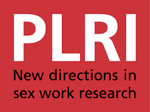World AIDS Day provides us with an opportunity for reflection – to remember those who we have lost and to look forward, to consider what still needs to be done if we are to tackle HIV. In terms of scientific advances and political commitment this year has been a very mixed bag.
Many of us were delighted when the HPTN 052 study found that antiretroviral treatment prevents the sexual transmission of HIV among heterosexual couples in whom one partner is HIV-infected and the other is not. The study showed a 96 per cent reduction in risk of HIV transmission: A real boost for people living with HIV and the people who love them. Of course condoms should remain the mainstay of HIV prevention because they offer protection from HIV, sexually transmitted infections and unwanted pregnancy. But this study provides further proof – if any was needed – of the need to increase access to life saving treatment services.
Then, in an uplifting speech by Secretary Clinton in the US, we heard that their government was committed to working towards an AIDS-free generation. She elaborated:
‘Now, by an AIDS-free generation, I mean one where, first, virtually no children are born with the virus; second, as these children become teenagers and adults, they are at far lower risk of becoming infected than they would be today thanks to a wide range of prevention tools; and third, if they do acquire HIV, they have access to treatment that helps prevent them from developing AIDS and passing the virus on to others’.
And yet as the year draws to a close there are some dark clouds on the horizon.
Activists and people delivering HIV services were shocked at the announcement from the Global Fund to fight AIDS, TB and Malaria that they will not be able to run this year’s funding round. So while they will endeavour to keep running those ‘essential services’ that are already in place no new activities will receive their support. It appears this decision was taken because some donors have changed their mind about pledges, and others said that they would delay payment.
So why is this a tragedy?
The Global Fund is one of the few financing mechanisms that makes a real effort to meaningfully involve affected communities in its governance structures. By affected communities they mean people living with HIV, sex workers, men who have sex with men, injecting drug users and others who are particularly vulnerable to HIV and its affects. This process isn’t perfect. Yet it is a financing mechanism that has funded those programmes that some other donors may shy away from due to ideological differences or distaste. An IDS study, Aid for AIDS, concluded that the Country Coordinating Mechanisms of the Global Fund have moved discussions of national sovereignty from a focus on governments to multi-sectoral national responses and therefore a more up-to-date and less state-centric notion of ‘the national’. The Global Fund gives money directly to governments for health systems strengthening and service delivery in many settings. But they also recognise that civil society is a vital partner in supporting community responses to HIV and holding governments to account.
The current scaling back of Global Fund support to ‘essential services’ clearly then begs the question ‘what services are essential?’ and ‘who will be the judge of that?’ – how essential are services to support sex workers and sexual minorities?
Adopting a glass half full approach we have chosen this World AIDS Day to launch a new online resource guide on HIV and Sex Work which was developed by the Paulo Longo Research Initiative. It is intended to provide key resources for development practitioners who are undertaking interventions that affect sex workers. It highlights literature in four focus areas: understanding sex work; links with HIV; human rights, laws and regulation; and developing and implementing sex work projects.
After more than two decades of research, there is a substantial body of knowledge about the role of commercial sex in HIV epidemics and the factors that drive sex workers’ and their clients’ vulnerability to HIV and AIDS. Let’s hope that this knowledge is not overlooked in these times of financial austerity.
By Kate Hawkins
This story originally appeared on the IDS website

